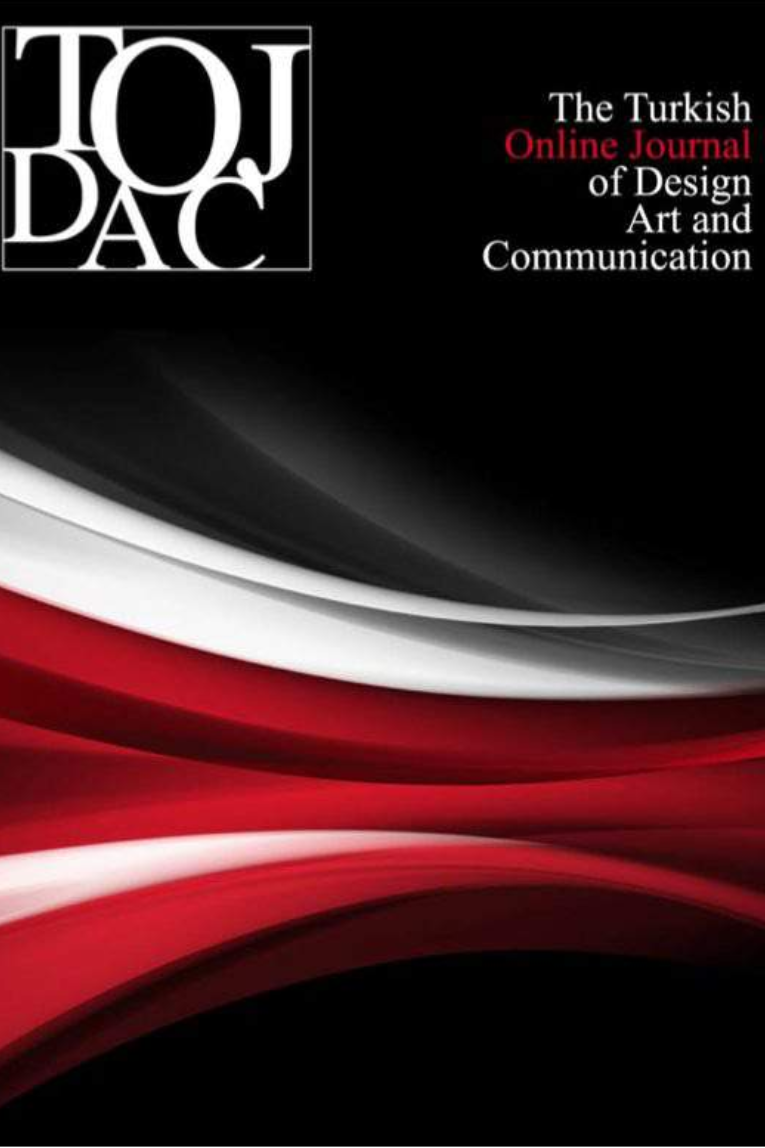KENTSEL DÖNÜŞÜMÜN PSİKO-MEKANSAL YANSIMALARI: iSTANBUL AYAZMA-BEZİRGANBAHÇE ÖRNEĞİ
Kentsel Dönüşüm, Psiko-Mekansal Mekanizmalar, Konut, Kültür
PSYCHO-SPATIAL REFLECTIONS OF URBAN TRANSFORMATION: THE CASE OF AYAZMA - BEZIRGANBAHCE IN ISTANBUL
Urban Transformation, Psycho-Spatial Mechanisms, Housing, Culture.,
___
- Altman I. and Chemers M., (1980). Culture and Environment, California: Wadsworth, Inc.
- Anonymous, (1991). Memo Larousse 2, İstanbul: Milliyet Publishing.
- Anonymous, (1993). Dictionnaire Larousse 2, İstanbul: Milliyet Publishing.
- Anonymous, (1997). TDK Türkçe Sözlük, Ankara: Türk Dil Kurumu Publishing.
- Armatlı Köroğlu, B. and Yalçıner Ercoşkun, Ö., (2010). “Urban Transformation: A Case Study on 7 Çukurambar, Ankara”, Gazi University Journal of Science, 19(3), pp.173-183.
- Batty, M., (2007). “The Creative Destruction of Cities”, Environment and Planning B: Planning and Design, pp.34, 2-5.
- Carmona, M., Heath, T., Oc, T. and Tiesdall, S., (2006). Public Places-Urban Spaces: The Dimensions of Urban Design, Oxford: Architectural Press, Elsevier.
- Dökmen, Ü. and Dökmen, S., (2011). İnsanın Korunaklari 2: Mimari, İstanbul: Remzi Publishing.
- Foxall, G. R. and Goldsmith, R. E., (1994). Consumer Psychology for Marketing, London: Routledge.
- Genç, F. N., (2014). “Gecekonduyla Mücadeleden Kentsel Dönüşüme Türkiye’de Kentleşme Politikaları”, The Journal of Adnan Menderes University Social Sciences Institute, 1(1), pp.15-30.
- Göksu, A. F., (2004). “Kentsel Dönüşüm: Yeni Yaklaşımlar ve Yenilikçi Modeller”, Mimar.ist Journal, 12, pp.81-86.
- Gürsel, Y., (2004). “Türkiye’de Kent Yenilemesi Sorunları”, Mimar.ist Journal, 12, pp.69-72.
- Farhan, S. L., Abdelmonem, M. G. and Nasar, Z. A., (2018). “The Urban Transformation of Traditional City Centres: Holy Karbala as a Case Study”, Archnet-IJAR: International Journal of Architectural Research, 12(3), pp.53-67.
- İncedayı, D., (2004). “Kentsel Dönüşüm Kavramı Üzerine”, Mimar.ist Journal, 12, pp.60-61.
- Karakurt Tosun, E., (2010.) Mekan, Kültür ve Yönetim Perspektifinde 21. Yüzyıl Kentleri, Bursa: Ekin Publishing.
- Keleş, R., (2015). Kentleşme Politikası, Ankara: İmge Publishing.
- Küçük, H., (2019). “Kentsel Dönüşüm ve Kent Güvenliği İlişkisi Üzerine Bir Değerlendirme: Esenler Havaalani Mahallesi Örneği”, ASSAM International Refereed Journal, Special Issue, pp.305-321.
- Lobo, C., (2004). The Role of Environmental Perceptions in Sense of Place: Case Studies in Neighborhoods in Phoenix, PhD Thesis, Arizona: Arizona State University.
- Manzo, L. C. and Perkins, D. D., (2006). “Finding Common Ground: The Importance of Place Attachment to Community Participation and Planning”, Journal of Planning Literature, 20(4), pp.335-350.
- Norberg-Schulz, C., (1974). Intensions in Architecture, Cambridge: The MIT Press.
- Payton, M. A., Fulton, D. C. and Anderson D. H., (2005). “Influence of Place Attachment and Trust on Civic Action: A Study at Sherburne National Wildlife Refuge”, Society & Natural Resources, 18(6), pp.511-528.
- Peris, J. and Bosch, M., (2020). “The Paradox of Planning for Transformation: The Case of the Integrated Sustainable Urban Development Strategy in València (Spain)”, Urban Transform 2, 7, pp.1-23.
- Üzel, K. (Photographer), (2017). Ayazma: Bir Başkalaşım Hikayesi (Ayazma: A Story of Metamorphosis), [photography exhibition], Istanbul: French Cultural Centre.
- Pizam, A. and Mansfeld, Y., (2000). Consumer Behavior in Travel and Tourism, Binghamton: The Haworth Hospitality Press. Rapoport, A., (2004). Kültür Mimarlık Tasarım, İstanbul: YEM Publishing.
- Scannell, L. and Gifford, R., (2017). “The Experienced Psychological Benefits of Place Attachment, Journal of Environmental Psychology, 51, pp.256-269.
- Schiffman, L. G. and Kanuk, L. L., (2000). Consumer Behavior, New Jersey: Prentice-Hall, Inc.
- Stedman, R. C., (2003). “Is It Really Just a Social Construction? The Contribution of the Physical Environment to Sense of Place”, Society and Natural Resources, 16, pp.671–685.
- Tekeli, İ., (2011). Kent Kentli Hakları Kentleşme ve Kentsel Dönüşüm Yazıları, İstanbul: Tarih Vakfı Yurt Publishing.
- Trancik, R., (1986). Finding Lost Space: Theories of Urban Design, Wiley.
- Turgut, S. and Ceylan, E., (2010). Bir Yerel Yönetim Deneyiminin Ardından, İstanbul: Alfa Yayıncılık.
- Turner, P. and Turner, S., (2006). “Place, Sense of Place, and Presence”, Presence, 15(2), pp.204-217.
- Türnüklü, A., (2000). “Eğitimbilim Araştırmalarında Etkin Olarak Kullanılabilecek Nitel Bir Araştırma Tekniği: Görüşme”, Kuram ve Uygulamada Eğitim Yönetimi Dergisi, 6(4), pp.543-559.
- Ünlü, T., (2011). “Towards the Conceptualization of Piecemeal Urban Transformation: The Case of Mersin, Turkey”, Built Environment, 37(4), pp.445–461.
- Wolfram, M., Frantzeskaki, N. and Maschmeyer, S., (2016). “Cities, Systems and Sustainability: Status and Perspectives of Research on Urban Transformations”, Curr. Opin. Env. Sust., 22, pp.18–25.
- Başlangıç: 2011
- Yayıncı: Deniz YENGİN
KİTLESEL ÇEVRİMİÇİ AÇIK DERSLERİN ÖĞRENCİ ETKİLEŞİMİNDE TASARIM ODAKLI DÜŞÜNME DERSİ ÖRNEĞİ
Can GÜVENİR, Hatice Hümanur BAĞLI, Özge DEMİRBAŞ
GENİŞLETİLMİŞ GERÇEKLİK UYGULAMALARINDA YAPAY ZEKANIN YARATICI KULLANIMI
OTURMA ELEMANI ÖRNEĞİNDE DUYGUSAL TASARIM YAKLAŞIMLARI ÜZERİNE BİR ANALİZ
NAKIŞ SANATINDA FARKLI MALZEME YAKLAŞIMLARI; KÂĞIT ÖRNEĞİ
PANDEMİ DÖNEMİNDE SANAT ORTAMLARININ DÖNÜŞÜMÜ
Asuman AYPEK ARSLAN, Sibel KURTOĞLU
SOKAK SANATININ KURUMSALLAŞMASI VE BAĞLAMINDAN KOPARILAN YAPITIN DEĞİŞEN DOĞASI
COVID-19 PANDEMİSİ KARANTİNA DÖNEMİNDE SPENCER TUNICK’İN SANATINDA BİR ARADA OLMAK
DİJİTAL BAĞIMLILIKLAR VE DİJİTAL BAĞIMLILIKLARDAN KURTULMA YOLU OLARAK DİJİTAL MİNİMALİZM
GELENEKSELDEN DİJİTALE EVRİLEN BİR MEDYA OLARAK AFİŞ
Fatma Nazlı KÖKSAL, Engin ALUÇ
KENTSEL DÖNÜŞÜMÜN PSİKO-MEKANSAL YANSIMALARI: iSTANBUL AYAZMA-BEZİRGANBAHÇE ÖRNEĞİ
